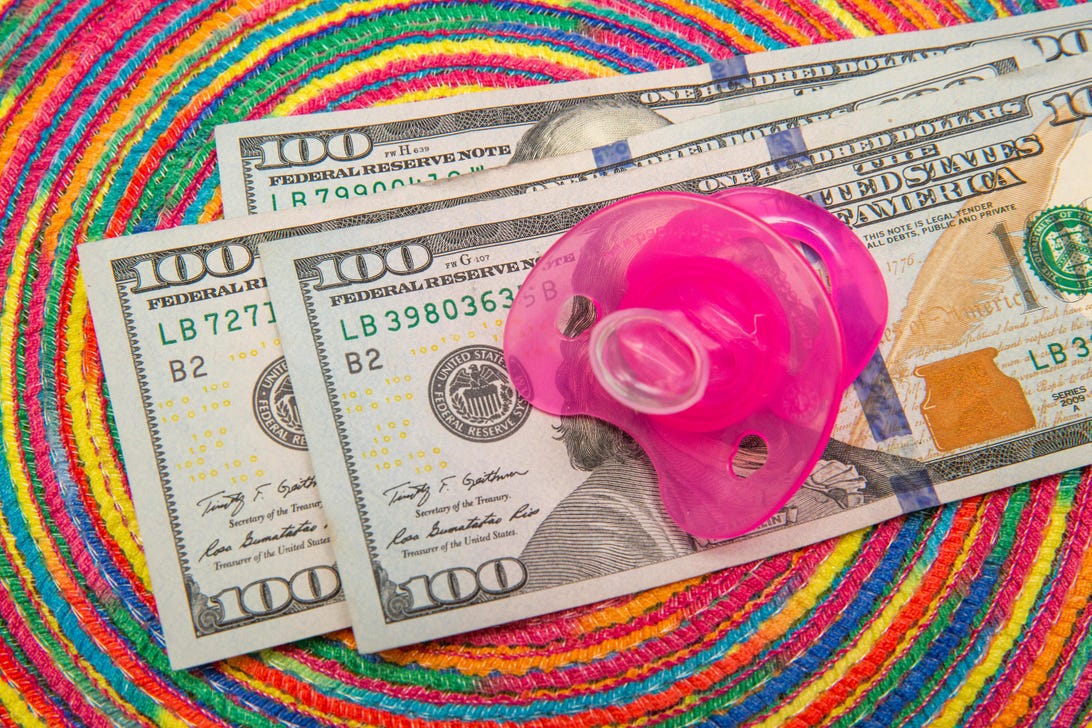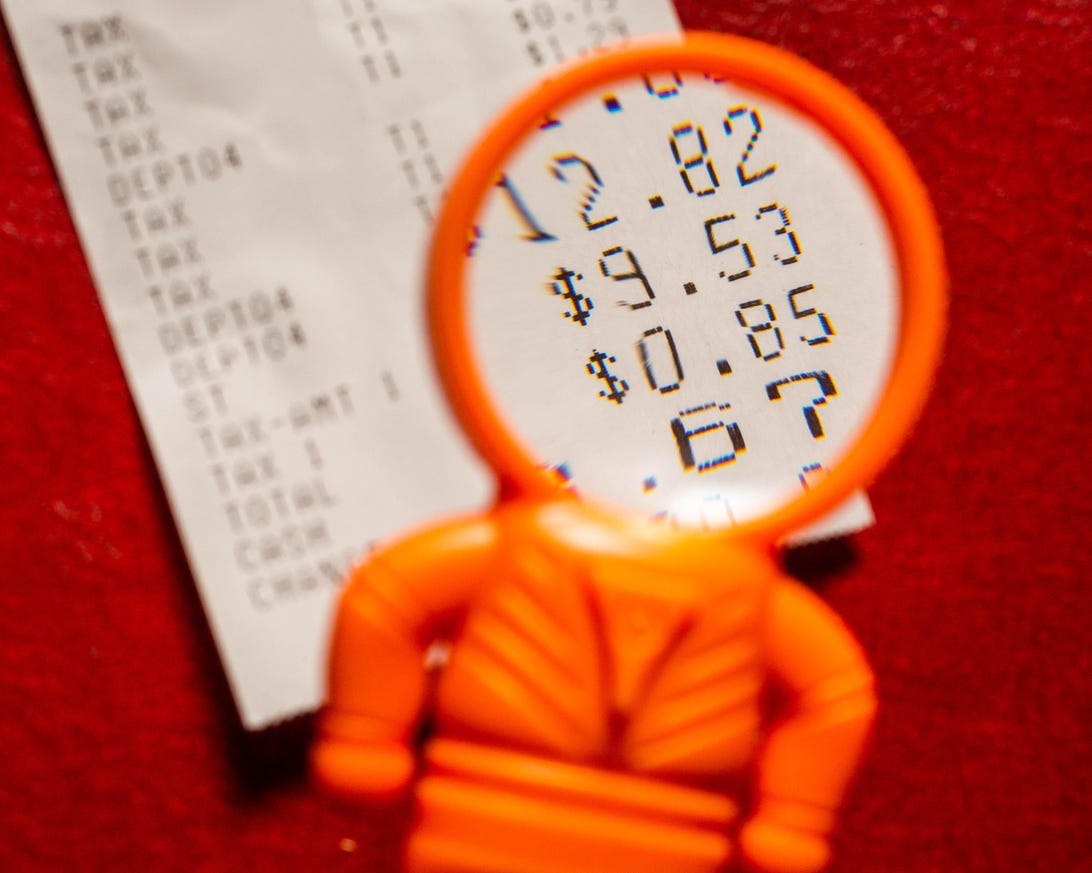
The effective increase in the value of the child and dependent care tax credit is about 381%.
Sarah Tew/CNETMonday, Jan. 24 marks the start of this year's tax season. Parents can expect to get the rest of their child tax credit money after they file their return, but that's not the only big boost for parents this season.
An entirely different tax break, called the child and dependent care credit, has also been greatly expanded, with the maximum effective return on the credit increasing to $4,000 for one child or $8,000 for two or more. In prior years, the maximum returns were $1,050 and $2,100, respectively.
The child and dependent care credit allows taxpayers to directly reduce their taxes by the amount spent on expenses related to child or dependent care, such as day care, babysitters or related transportation.
Thanks to a one-time expansion in the American Rescue Plan Act, parents who paid for child care in 2021 can claim $8,000 in expenses for one dependent or $16,000 for multiple. The return rate on child care expenses was also increased from 35% to 50%.
The catch? You'll need all your receipts and other monetary proof to make sure you can claim the tax break when you file your income tax return.
We'll explain how the child care tax credit works below. For more info on your taxes in 2022, read about how to get the rest of your expanded child tax credit money, nine tax myths to avoid and 13 lesser-known tax deductions and credits.
What's the child and dependent care credit?
The child and dependent care credit is a tax break designed to let parents claim expenses from child care. For example, if you paid for a day care provider while you were working, that expense can be claimed as a credit when you file your taxes this year.
How is the child care credit different for 2021 taxes? In previous years, the maximum amount you could claim was $3,000 for one child or $6,000 for two or more. For 2021 expenses, you can claim up to $8,000 for one child or dependent and up to $16,000 for multiple children. The onetime expansion of the child care credit for 2021 also increases the maximum return rate for child care expenses from 35% to 50%.
What does that mean? In brief, for the 2021 tax year, you could get up to $4,000 back for one child and $8,000 back for care of two or more. In prior years, the maximum return for the credit was $1,050 for one child or $2,100 for two or more. That's a 381% increase!
Before the American Rescue Plan, the child and dependent care credit was nonrefundable, meaning it could reduce your tax bill to zero but you would not receive a refund on anything extra. Now, the credit is fully refundable, meaning that you will receive money for it even if you don't owe taxes.
What counts as a qualifying expense for the child care credit?
The law defines expenses based on child care providers, but there's some wiggle room that also accounts for expenses like transportation. Any organization or person providing care for your dependent counts as long as you're paying them. (For example, a spouse or unpaid relative doesn't count.)
The IRS has relatively relaxed rules about care providers, according to Elaine Maag, principal research associate at the Urban Institute. However, you'll likely have better luck claiming child care credits for people and groups operating in an official capacity, such as nursery schools and day care centers, opposed to the $40 you paid a teenager to watch your child for an afternoon.
Qualified care providers
| What qualifies | What doesn't qualify |
|---|---|
| Day care expenses | Your spouse |
| Before- and after-school care programs | The dependent's parent |
| Day camp | Your children |
| Transportation to and from care providers | Babysitters paid "under the table"* |
| Babysitters, nannies, housekeepers |
*Parents who pay their babysitters cash "under the table" should know it's risky to claim the child care tax credit since the income may not be claimed or documented by the provider.
How do I claim child care expenses on my tax return?
Make sure you have a detailed account of all child care expenses -- most importantly any receipts you received from day cares or after-school programs showing your expenses. When tax day approaches, complete Form 2441 and attach it to your Form 1040 tax return.
According to the IRS, you'll need to report the name, address and "taxpayer identification number" or TIN (it can be a Social Security number or the employer identification number) of the care provider on your return. You can use Form W-10 to request the information you need from your care provider.
Note that the child and dependent care credit form is built into tax software such as TurboTax and H&R Block. Those programs will ask if you have a child under age 13 and if you paid for child care during the year in order to calculate your child care credit.

You'll need detailed records of expenses and receipts to claim the child care credit.
Sarah Tew/CNETWhat's the maximum amount I can get back for child care expenses?
For expenses accrued in 2021, the IRS says you can claim up to $8,000 in eligible expenses for one dependent or up to $16,000 in eligible expenses for multiple dependents.
Keep in mind that the child and dependent care credit is not the same as the similarly named child tax credit. Advance child tax credit payments were disbursed on a monthly basis last year. If you're eligible for the child tax credit and didn't receive advance payments, you can receive between $500 and $3,600 per child as credit when you file your taxes.
Does my income affect how much money I can claim or get back?
To qualify for the child care credit, a tax filer must have earned income, such as wages from a job or unemployment. If you are married and filing a joint tax return, your spouse must also have earned income. (Exemptions apply to full-time students and people receiving disability benefits.) The IRS says that generally you may not take the child care credit if you are married and filing separately.
The maximum amount of claimable child care expenses -- $8,000 for one child or $16,000 for two or more -- is not affected by income level. However, the rate of return for the child care credit decreases as income increases.
For the 2021 tax year, the credit rate starts to reduce when a taxpayer's income or household AGI (adjusted gross income), reaches $125,000. The credit rate is reduced by 1% for every $2,000 earned over $125,000, up until $183,000, where it settles at 20% for everyone earning $183,001-$400,000. For example, an AGI of $145,000 would receive a tax credit rate of 40%.
For those making more than $400,000, the credit rate again reduces by 1% for every $2,000 earned over $400,000, and becomes zero for families earning $438,000 or more. For example, an AGI of $410,000 would receive a tax credit rate of 15%.
Which dependents qualify to be included in the child care credit?
According to the IRS, qualifying rules for dependents are fairly broad, but a dependent must fit one of the following criteria:
- Be under the age of 13, or
- Be unable to care for themselves if 13 or older (for example, if you have a spouse or older dependent who is impaired and incapable of caring for themselves, and has lived with you for more than half the year, or
- Be physically or mentally incapable of self-care -- even if their income was $4,300 or more.
In addition, the qualifying dependent must have a tax identification number, such as a Social Security number.
What do I need to know if I'm separated or divorced?
Only the custodial parent can claim the child care credit on their taxes. The IRS defines the custodial parent as the parent whom the child lived with for the greater number of nights in 2021. The rules for separated or divorced parents are similar to those governing the child tax credit and shared custody.
"care" - Google News
January 23, 2022 at 07:00AM
https://ift.tt/32paLGv
Money from the child care credit nearly quadruples this tax season: What you need to know - CNET
"care" - Google News
https://ift.tt/2N6arSB
Shoes Man Tutorial
Pos News Update
Meme Update
Korean Entertainment News
Japan News Update
Bagikan Berita Ini















0 Response to "Money from the child care credit nearly quadruples this tax season: What you need to know - CNET"
Post a Comment